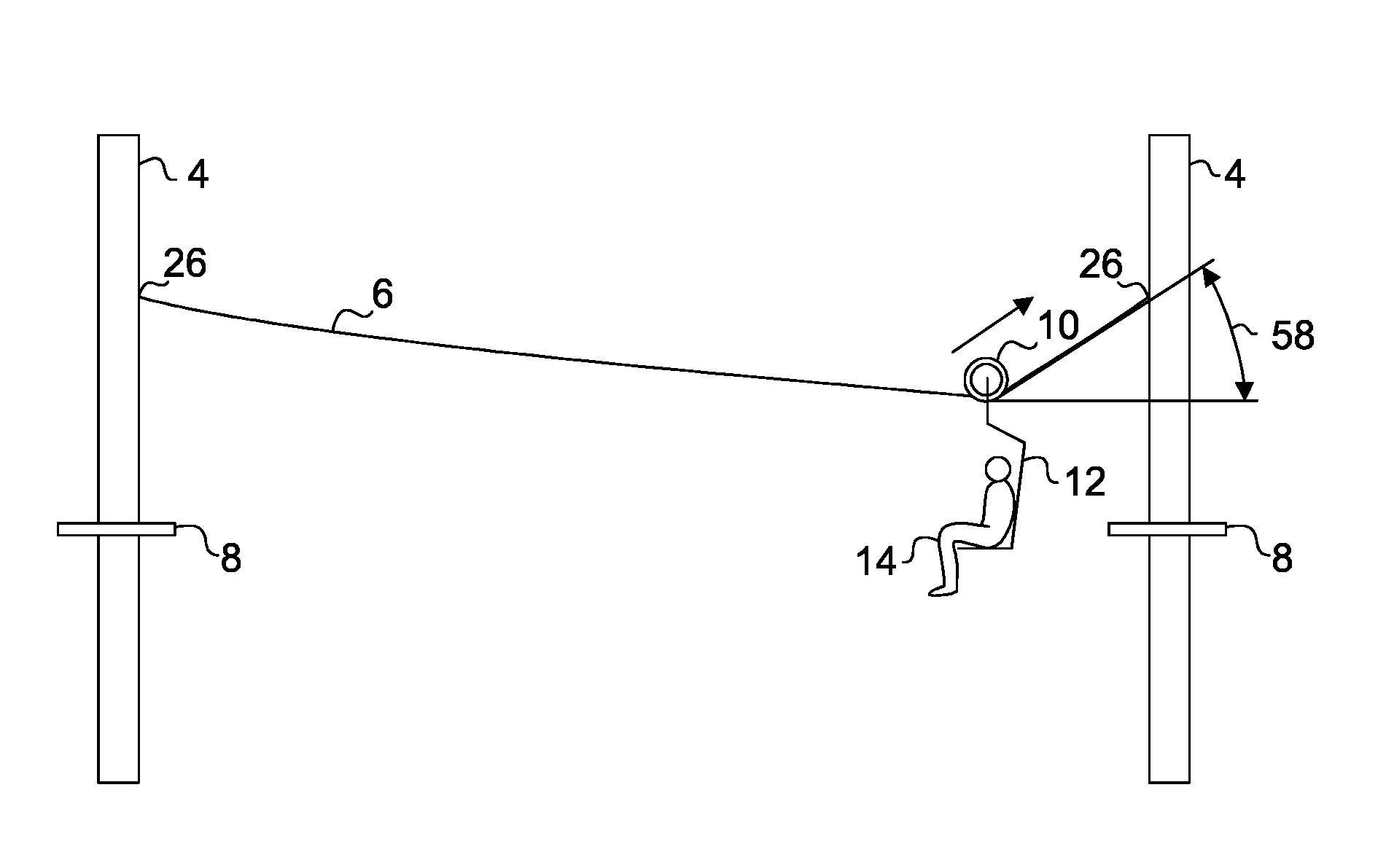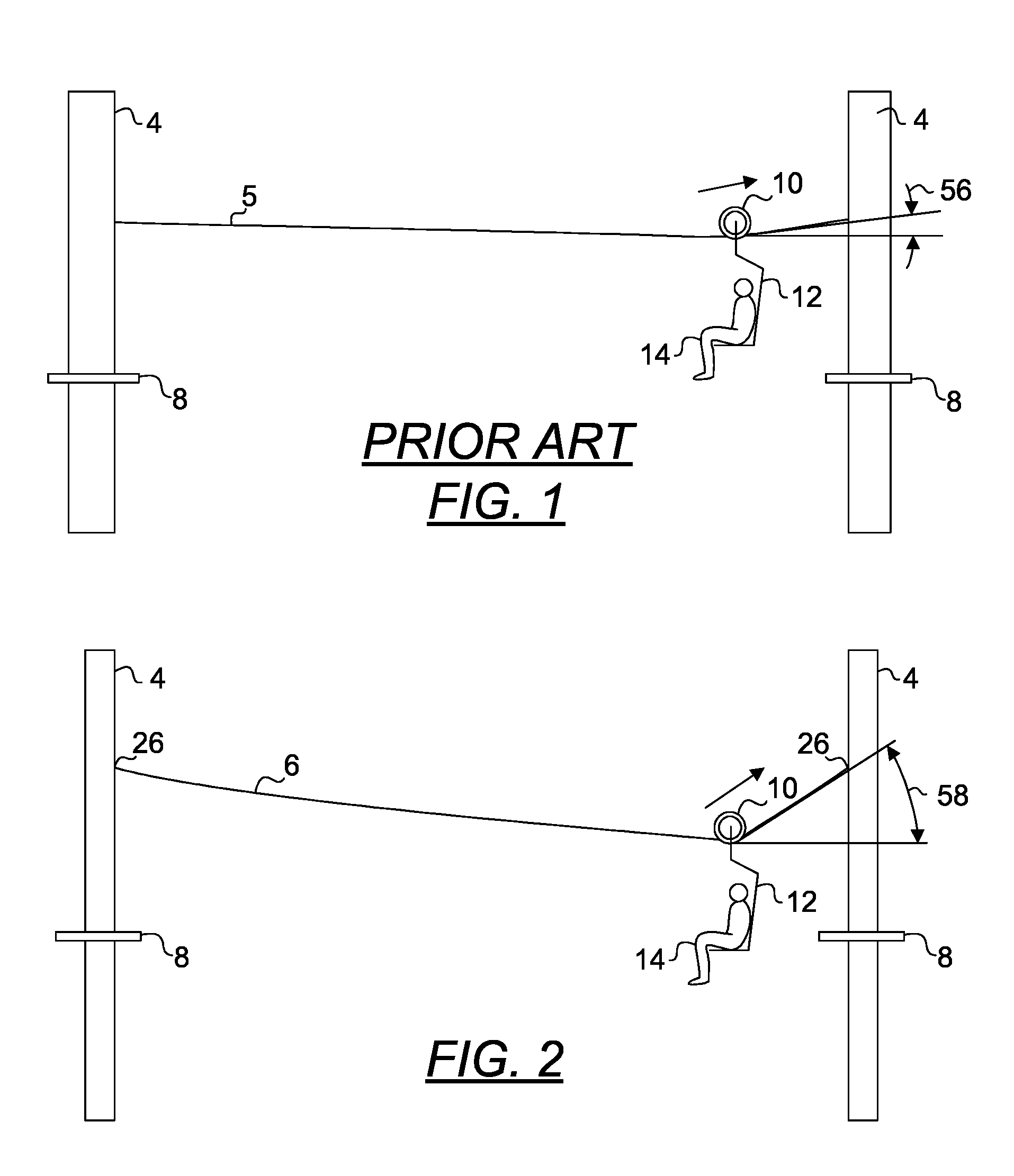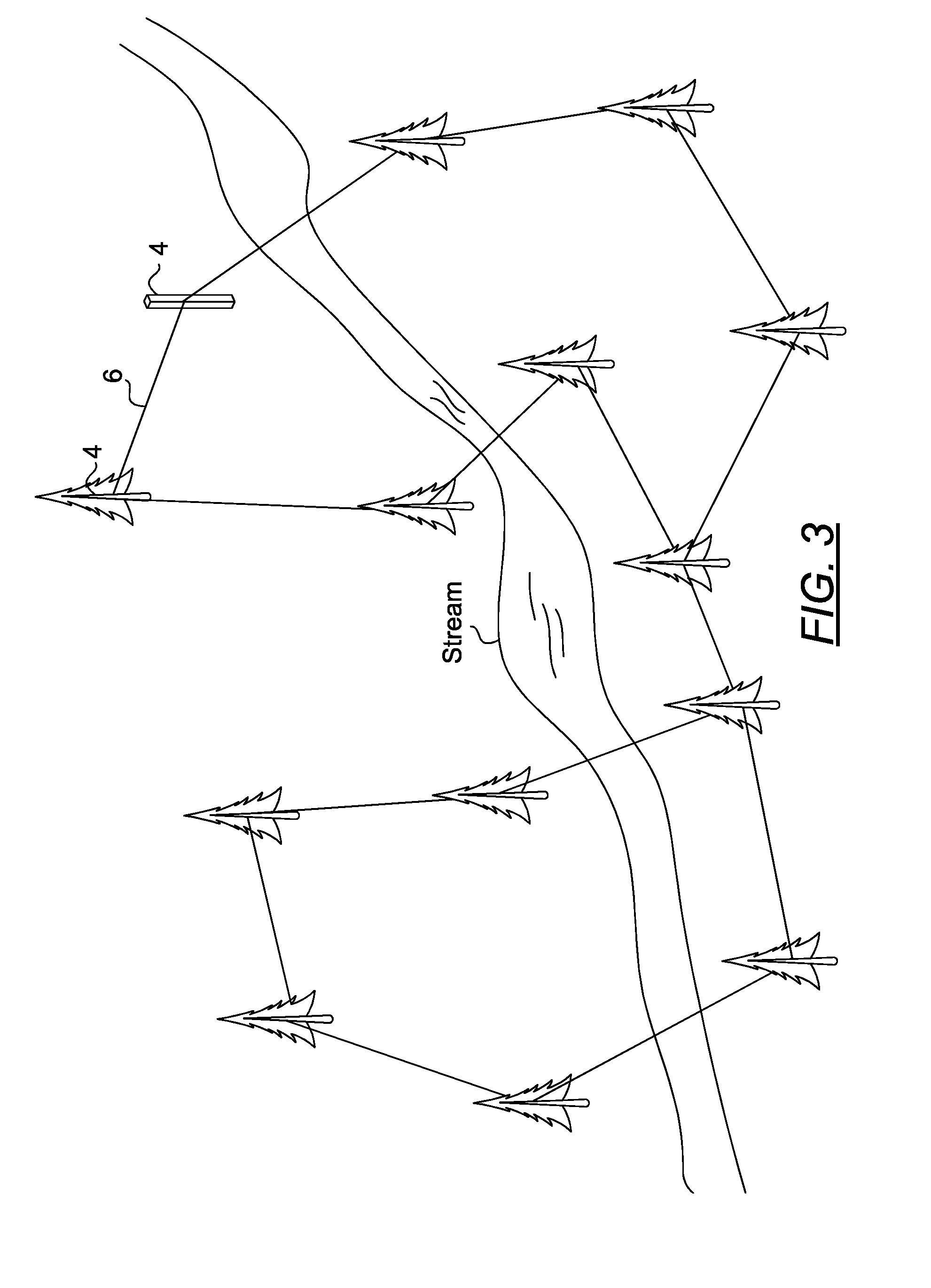Ramp system for bridging flexible cable to rigid rail
a flexible cable and ramp technology, applied in the field of ramp systems, can solve the problems of increasing the approach angle of any given load, lagging ramp surface, and the same hardness, so as to reduce the approach angle, reduce fatigue, and reduce the effect of cable bending
- Summary
- Abstract
- Description
- Claims
- Application Information
AI Technical Summary
Benefits of technology
Problems solved by technology
Method used
Image
Examples
Embodiment Construction
[0104]The term “about” is used herein to mean approximately, roughly, around, or in the region of. When the term “about” is used in conjunction with a numerical range, it modifies that range by extending the boundaries above and below the numerical values set forth. In general, the term “about” is used herein to modify a numerical value above and below the stated value by a variance of 20 percent up or down (higher or lower).
[0105]FIG. 1 is a diagram depicting the prior art use of a high tension cable 5 simply supported at its ends using a support 4 on each end. The cable 5 is spanned between two supports 4 and simply supported at each end with a support 4. The cable 5 is configured for use with a trolley 12 having a drive wheel 10 which comes in contact with and rides on the cable 5.
[0106]FIG. 2 is a diagram depicting the use of a low tension cable 6 simply supported at each end using a support 4. FIG. 3 is a diagram depicting a network of cables connecting various erected structur...
PUM
 Login to View More
Login to View More Abstract
Description
Claims
Application Information
 Login to View More
Login to View More - R&D
- Intellectual Property
- Life Sciences
- Materials
- Tech Scout
- Unparalleled Data Quality
- Higher Quality Content
- 60% Fewer Hallucinations
Browse by: Latest US Patents, China's latest patents, Technical Efficacy Thesaurus, Application Domain, Technology Topic, Popular Technical Reports.
© 2025 PatSnap. All rights reserved.Legal|Privacy policy|Modern Slavery Act Transparency Statement|Sitemap|About US| Contact US: help@patsnap.com



